An Aussie misadventure, writ large
Published on February 23rd, 2015
by Bob Muggleston, Points East
On a bitingly cold day in February, with a fierce winter storm bearing down on them, Jason and Reg McGlashan – 37 and 66 years-old, respectively – left Conanicut Marina in Newport, Rhode Island, headed for Bermuda and ultimately their native Australia, via the Cape of Good Hope. The younger McGlashan had recently bought the boat they sailed – Sedona, a 43-foot custom racing yacht built in 1995 – for a song on eBay.
Two days later, their U.S. Coast Guard rescue about 150 miles south of Nantucket, Mass., in 60 knot-winds, made national news, and included footage of the two men being hoisted into a helicopter.
A predictable outcome? Maybe. Details that emerged after the rescue made the attempt seem, at the very least, foolhardy. Take the boat, for instance. It was a fast and capable racer that had been to Bermuda several times, but it hadn’t been used in a while, and never got a proper shakedown prior to leaving Newport. It was also revealed that Reg, the father, was a non-sailor. The day they left? Friday the 13th.
So what, exactly, were they thinking?
Now we know. Points East caught up with Jason McGlashan, who is now back in Australia, and was nice enough to give us some of his time. A few of his answers to our queries beg even more questions, which is understandable when trying to encapsulate a succession of monumental occurrences in a small number of words.
Points East: How experienced a sailor are you? Have you ever done any singlehanding?
McGlashan: I have been sailing for about 25 years on everything from windsurfers to yachts and multihulls. I have done a lot of short-handed sailing, but only limited singlehanded.
PE: How long had you been looking for a boat when you found Sedona?
McGlashan: I had been looking for a yacht like Sedona for years. Every time I had money there were no yachts, every time there were yachts, I had no money. This one came up at a time when I had money, it appealed to me, and so I purchased it.
PE: What was it about her that made you consider the trip from Newport all the way to Australia?
McGlashan: The lines appealed to me – it looked like a quick yacht, and durable. It had the room I needed on board and the speed, and it also had a pretty heavy keel helping with the ballast.
PE: How long did it take to get her in shape, and what sacrifices did you have to make in order to fulfill this dream?
McGlashan: It took a bit over six weeks to get her into shape. We had planned on doing some sightseeing while in the States, but, unfortunately, we didn’t have time for this. I had stopped running my own business of sailmaking, selling boat accessories and working on boats, to start working for other people to try and speed up the process of getting ahead in life to be able to afford something like this. The last three years, I have spent working in the mines trying to get enough money to pay my bills, save up and purchase a nice boat.
PE: Did you have any second thoughts once you actually saw Sedona?
McGlashan: I had purchased the boat around three months before I actually saw it. The photos I had on it were good – they showed me a lot of detail – so once I turned up at the yard, I found it pretty easy. It was what I thought it was. All I wanted to do then was to get it together and get it wet.
PE: Considering the brutal winter we’ve been experiencing here in New England, how closely were you following the weather, and did the overall pattern make you reconsider?
McGlashan: We had been checking the weather every day. We had made the decision that, if the guys hadn’t finished the install on the new autopilot by mid-Friday, we wouldn’t leave until after the storm. We had been told via email we had to leave the jetty by Saturday as the storm coming Sunday could cause damage to the jetty and our boat if we stayed on it. Everything was finished on time.
PE: Why Bermuda and the Cape of Good Hope, instead of a western route, on which you could make multiple stops (to fix stuff) and enjoy some warm weather? Maybe you could explain the game plan for trying to beat the weather system that eventually caught you.
McGlashan: The reason we chose that route was, that the trades were in our favor, making the trip much quicker. The route had deeper water making it much safer – more of a rolling wave than short and sharp ones to pound the boat. (Editor’s note: Elsewhere, Jason has mentioned wanting to get back to Australia before winter set in, the eastabout route being ostensibly faster).
We had planned on stopping in Bermuda and then sailing under South Africa, where we would stop if needed, then on to Australia, where we would most likely stop in Perth. We knew the boat could do at least 150 miles in a day if we didn’t have the problems that came up, including with our back-up gear. [Making those miles] we would have easily outrun the storm.
PE: Was there an adequate shakedown for Sedona? Describe the safety equipment aboard her.
McGlashan: We had the boat in the water for almost a week, finishing off the repairs and installs of new gear. We didn’t go sparingly with safety gear, with most of it being brand new, including an EPIRB for the boat and a personal EPIRB each, flares, safety harnesses, wet-weather gear, raft, VHF radio for the boat and a hand-held, latest GPS and AIS – the list could keep continuing.
PE: What happened to the sails and engine?
McGlashan: What happened was, the charging unit for the Yanmar started to fail, so we connected the wind generator, only to find this didn’t last long and was most likely faulty – we had just purchased this from a local shop. Once both charging units failed, I pulled the sails down to do some repairs, as part of the main had come out from under its lashing and caught on one of the winches, I suspect, and both sheets had come off the headsail – I still don’t know how this happened, as the clips were a double safety clip. I’m not sure how this sail tore.
Once the sails were torn we tried to motor, as sunrise was a couple of hours away, and it would be best to fix the sails then. We motored for around 1.5 hours, doing around six knots so as not to push the motor, at which time it shut itself down. This is when we tried to call for assistance. Initially there were light winds and warm temperatures. We had tried on the radio, but unfortunately there were no other boats nearby. We then tried the sat phone, but were having trouble connecting with the U.S., so we called numbers we had for home to relay the message.
When this was taking a long time we thought we would set off the EPIRB. The storm only came up about an hour before we were rescued. Unfortunately I had to leave my boat behind.
PE: What’s the status of the boat right now?
McGlashan: The boat is currently drifting in the ocean. I would do almost anything to get it back.
PE: What did you learn from all this? Given what happened, would you do it all again?
McGlashan: You can never have enough spares. Given what happened I would do it again. My only regrets are getting the Coast Guard to come and get us, and leaving my yacht.
Bob Muggleston is Points East magazine’s associate editor.


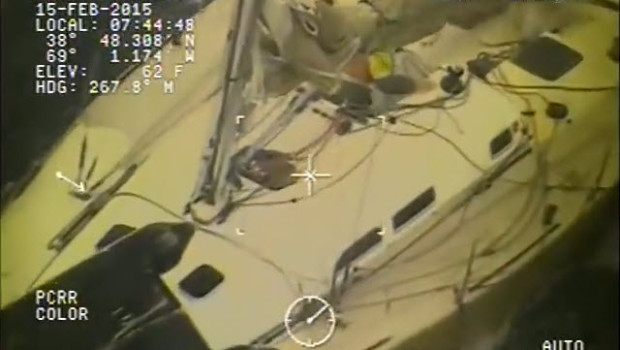


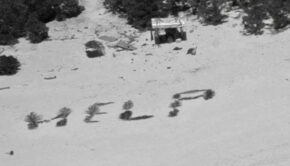
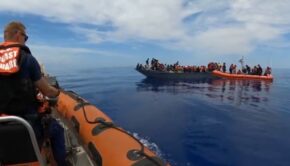
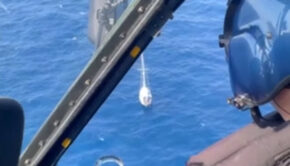
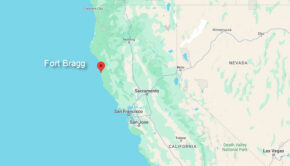
 We’ll keep your information safe.
We’ll keep your information safe.